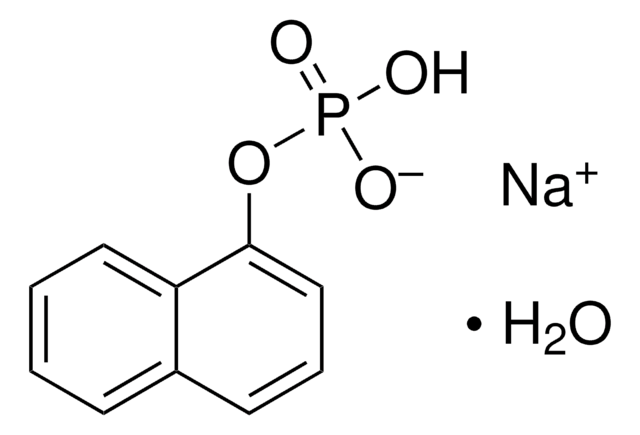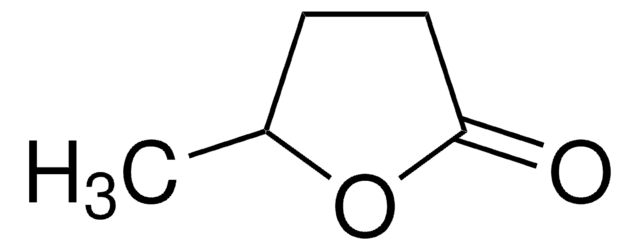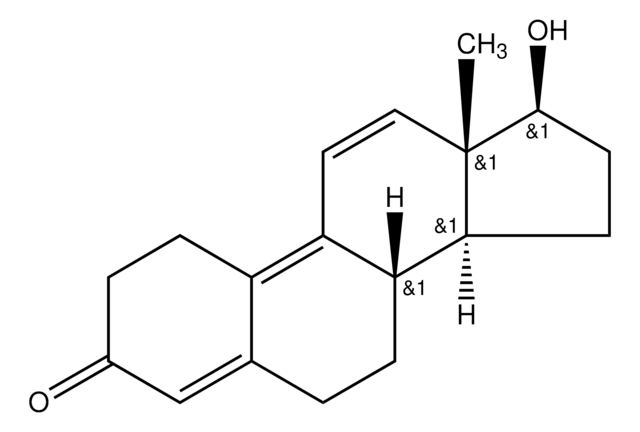S8750
Sodium acetate
anhydrous, ReagentPlus®, ≥99.0%
Synonym(s):
Acetic acid sodium salt
Sign Into View Organizational & Contract Pricing
All Photos(4)
About This Item
Linear Formula:
CH3COONa
CAS Number:
Molecular Weight:
82.03
Beilstein:
3595639
EC Number:
MDL number:
UNSPSC Code:
12352300
eCl@ss:
39021906
PubChem Substance ID:
NACRES:
NA.55
Recommended Products
grade
anhydrous
Quality Level
product line
ReagentPlus®
Assay
≥99.0%
form
solid
autoignition temp.
1112 °F
pH
8.5-9.9 (25 °C, 246 g/L)
pKa
4.76 (acetic acid)
mp
>300 °C (dec.) (lit.)
SMILES string
[Na+].CC([O-])=O
InChI
1S/C2H4O2.Na/c1-2(3)4;/h1H3,(H,3,4);/q;+1/p-1
InChI key
VMHLLURERBWHNL-UHFFFAOYSA-M
Looking for similar products? Visit Product Comparison Guide
Related Categories
General description
Sodium acetate is a non-toxic chemical substancethat is widely used in industry as a food additive or as a base for theneutralization of reaction mixtures.
Application
Sodium acetate can be used as a reagent:
- In the Erlenmeyer-Plochl reaction to synthesize oxazolones by the condensation of aromatic aldehydes and hippuric acid.
- In the rhodium-catalyzed cascade cyclization between benzoic acids and isocyanates to synthesize N-substituted phthalimides.
Legal Information
ReagentPlus is a registered trademark of Merck KGaA, Darmstadt, Germany
Storage Class Code
11 - Combustible Solids
WGK
WGK 1
Flash Point(F)
Not applicable
Flash Point(C)
Not applicable
Choose from one of the most recent versions:
Already Own This Product?
Find documentation for the products that you have recently purchased in the Document Library.
Customers Also Viewed
R R Deshmukh et al.
Chemical communications (Cambridge, England), (17)(17), 1544-1545 (2002-09-21)
Heck reaction proceeds at ambient temperature (30 degrees C) with considerably enhanced reaction rate (1.5-3 h) through the formation of Pd-biscarbene complexes and stabilized clusters of zero-valent Pd nanoparticles in ionic liquids under ultrasonic irradiation.
Heck reaction in ionic liquids catalyzed by a Pd-benzothiazole carbene complex.
Calo V, et al.
Tetrahedron Letters, 41(46), 8973-8976 (2000)
A J Degnan et al.
Applied and environmental microbiology, 60(9), 3198-3203 (1994-09-01)
Fresh blue crab (Callinectes sapidus) meat was obtained from retail markets in Florida and sampled for viable Listeria monocytogenes. The pathogen was found in crabmeat in three of four different lots tested by enrichment and at levels of 75 CFU/g
R E Kingston et al.
Current protocols in molecular biology, Chapter 4, Unit4-Unit4 (2008-02-12)
Three different methods for RNA preparation using guanidine are presented in this unit--a single-step isolation method employing liquid-phase separation to selectively extract total RNA from tissues and cultured cells and two methods that rely on a CsCl step gradient to
Listeria monocytogenes inhibition in refrigerated vacuum packaged turkey bologna by chemical additives.
Wederquist HJ, et al.
Journal of Food Science, 59(3), 498-500 (1994)
Our team of scientists has experience in all areas of research including Life Science, Material Science, Chemical Synthesis, Chromatography, Analytical and many others.
Contact Technical Service






